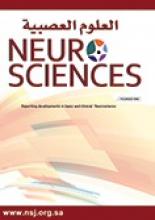Abstract
During the recent years, a significant number of anti-epileptic drugs have been approved for prescription in different countries. In addition, some other promising drugs are in various stages of development. Soon after each drug has found its place in the therapeutic arsenal, pregnancies with exposure occur, with an increased risk of birth defect and developmental disturbances. As regards the possible teratogenic effect of the new anti-epileptic drugs, apart some individual reports we have only the results of pre-clinical toxicological studies which are difficult to extrapolate to the human situation, because of the well-known interspecies differences in pharmacokinetics and pharmacodynamics. Furthermore, combinations of anti-epileptic drugs are not tested pre-clinically while these new drugs are prescribed as add-on medication. So, metabolic interactions between individual components of such drug combinations may induce unexpected teratogenic effects. Also as for the teratogenic effects of the ‘old’ drugs many questions have still to be defined. The most common and more important are which anti-epileptic drugs or combination of drugs is most safe for a particular woman with epilepsy and if there is an association between single anti-epileptic drugs and specific malformations. The reason is that none of the available reports to date have studied a sufficient number of women with epilepsy exposed to anti-epileptic drug monotherapy during pregnancy. Other questions concern dose-effect relationships, a universally accepted definition of major and minor malformations, and the lack of a thorough, exhaustive evaluation of the other risk factors, apart from the drugs. All these questions need to be ascertained for both the old and the new anti-epileptic drugs. Owing to these considerations, in 1998 an European Register of anti-epileptic drugs and pregnancy was instituted. The primary objective of the study is to evaluate and determine the degree of safety, with respect to the human foetus, of anti-epileptic drugs with reference to both old and new, and to individual drugs and drugs in combination. Secondary objectives are to establish the pattern of abnormalities, if any, associated with anti-epileptic drugs individually and in combination, to delineate drug-specific syndromes, if any, to evaluate dose-effect relationships. Tertiary objectives are to provide references data for use in pre-pregnancy counselling, and for development of guidelines. The evaluation of other etiological risk factors is also considered.
- Copyright: © Neurosciences
Neurosciences is an Open Access journal and articles published are distributed under the terms of the Creative Commons Attribution-NonCommercial License (CC BY-NC). Readers may copy, distribute, and display the work for non-commercial purposes with the proper citation of the original work.






